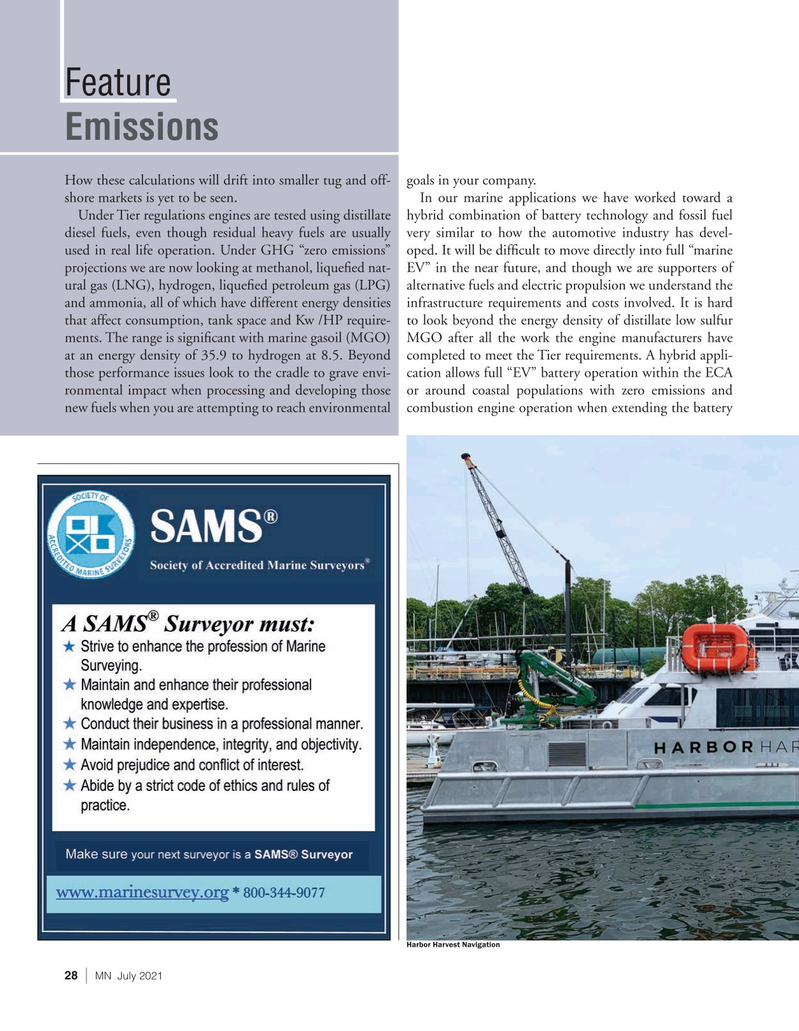
Page 28: of Marine News Magazine (July 2021)
Propulsion Technology
Read this page in Pdf, Flash or Html5 edition of July 2021 Marine News Magazine
Feature
Emissions
How these calculations will drift into smaller tug and off- goals in your company. shore markets is yet to be seen. In our marine applications we have worked toward a
Under Tier regulations engines are tested using distillate hybrid combination of battery technology and fossil fuel diesel fuels, even though residual heavy fuels are usually very similar to how the automotive industry has devel- used in real life operation. Under GHG “zero emissions” oped. It will be dif? cult to move directly into full “marine projections we are now looking at methanol, lique? ed nat- EV” in the near future, and though we are supporters of ural gas (LNG), hydrogen, lique? ed petroleum gas (LPG) alternative fuels and electric propulsion we understand the and ammonia, all of which have different energy densities infrastructure requirements and costs involved. It is hard that affect consumption, tank space and Kw /HP require- to look beyond the energy density of distillate low sulfur ments. The range is signi? cant with marine gasoil (MGO) MGO after all the work the engine manufacturers have at an energy density of 35.9 to hydrogen at 8.5. Beyond completed to meet the Tier requirements. A hybrid appli- those performance issues look to the cradle to grave envi- cation allows full “EV” battery operation within the ECA ronmental impact when processing and developing those or around coastal populations with zero emissions and new fuels when you are attempting to reach environmental combustion engine operation when extending the battery
Harbor Harvest Navigation 28 | MN July 2021

 27
27

 29
29
